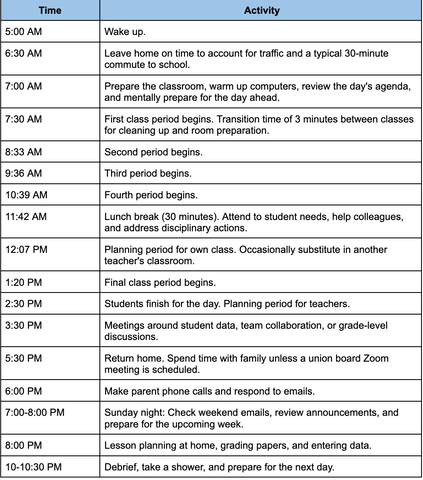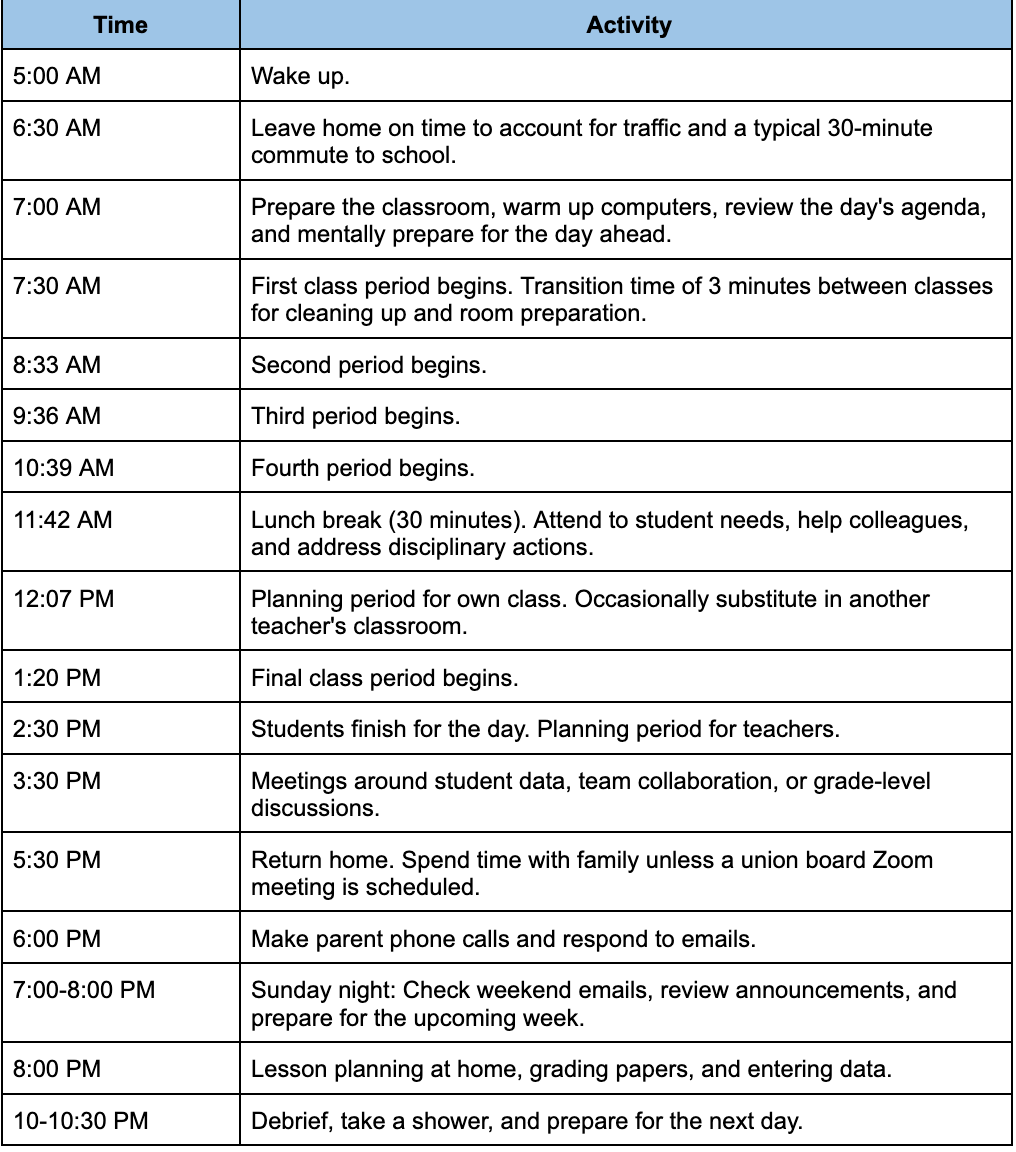by Arthur Rubin, MSW, COO, Partner
As an ESL teacher, your daily routine can be demanding and overwhelming. It's essential to stay organized and manage your time effectively. Here's a breakdown of a typical day in a teacher's life, accompanied by a table for easy reference:

It's apparent that a teacher's daily routine is packed with numerous responsibilities and demands. The workload can often become overwhelming, particularly when considering external factors and the absence of colleagues. However, it's imperative not to allow these challenges to dictate your life.
To better manage your workload, keep in mind the following rules:
Rule #1: Complexity increases by the power of the number of variables. Understand the multitude of tasks and responsibilities you face daily, but also recognize that you can't control every variable. Prioritize and focus on what you can realistically achieve.
Rule #2: We make decisions based on the information we have at the moment. Don't dwell on past decisions or blame yourself for them. You always do your best with the information YOU HAVE. Embrace the fact that you can't always have all the answers.
Rule #3: Focus on what you can do right now. When confronted with a task or decision, ask yourself: "What can I do about this RIGHT NOW?" Take action if there is a clear answer, or move on to another task if there isn't. Don't burden yourself with "should have, could have, would have" thoughts.
Surviving as an ESL teacher requires organization, time management, and self-compassion. By embracing these principles and utilizing available resources, you can navigate the challenges and make a positive impact on your students' lives.
Moreover, it is essential to recognize the importance of leveraging pre-existing resources and materials crafted by experienced educators. By doing so, you can save valuable time and effort, enabling you to concentrate on what truly matters – teaching. Notably, Elaine Kirn-Rubin has curated a range of ESL-Literacy Improvement curriculum materials that you can readily employ to enhance your teaching without the need to start from scratch.
1. Use Simple Future Statements for Plans & Scheduled Events
a) A brief summary of Simple Future forms and patterns—with different practice exercises.
b) This one is FREE!
2. Review & Summarize the Pronunciation of 16 Vowel Sounds + the Sound Principle of Vowel Lengthening
a) Pronunciation of 16 Vowel Sounds + the Sound Principle of Vowel Lengthening
b) Only $1.00!
3. Combine Clauses to Show Connections Between Ideas, Contrasts, Results, & Time Relationships
a) Combine Clauses to Show Connections Between Ideas, Contrasts, Results, Time Relationships
b) Would you believe $3.00?
4. Get & Use Deck G of 52 Intermediate Rhyming-Words Picture Cards
a) Deck G of 52 Intermediate Rhyming-Words Picture Cards
b) These are just $2.00, and well worth it for ease of use and effectiveness.
5. Use Synonyms & Opposites: Saying the Same Thing in Different Ways
a) Synonyms & Opposites: Saying the Same Thing in Different Ways
b) Good value for the money: $3.00
Feel free to shoot us any questions you have! Just fill out this super handy form over
here: https://worklifeenglish.com/pages/contact. We're more than happy to help you out! All of our teacher-created, ESL and English Literacy Improvement teaching materials
can be downloaded at: https://worklifeenglish.com.
Additionally, feel free to share any other information on what else would be beneficial to you.

